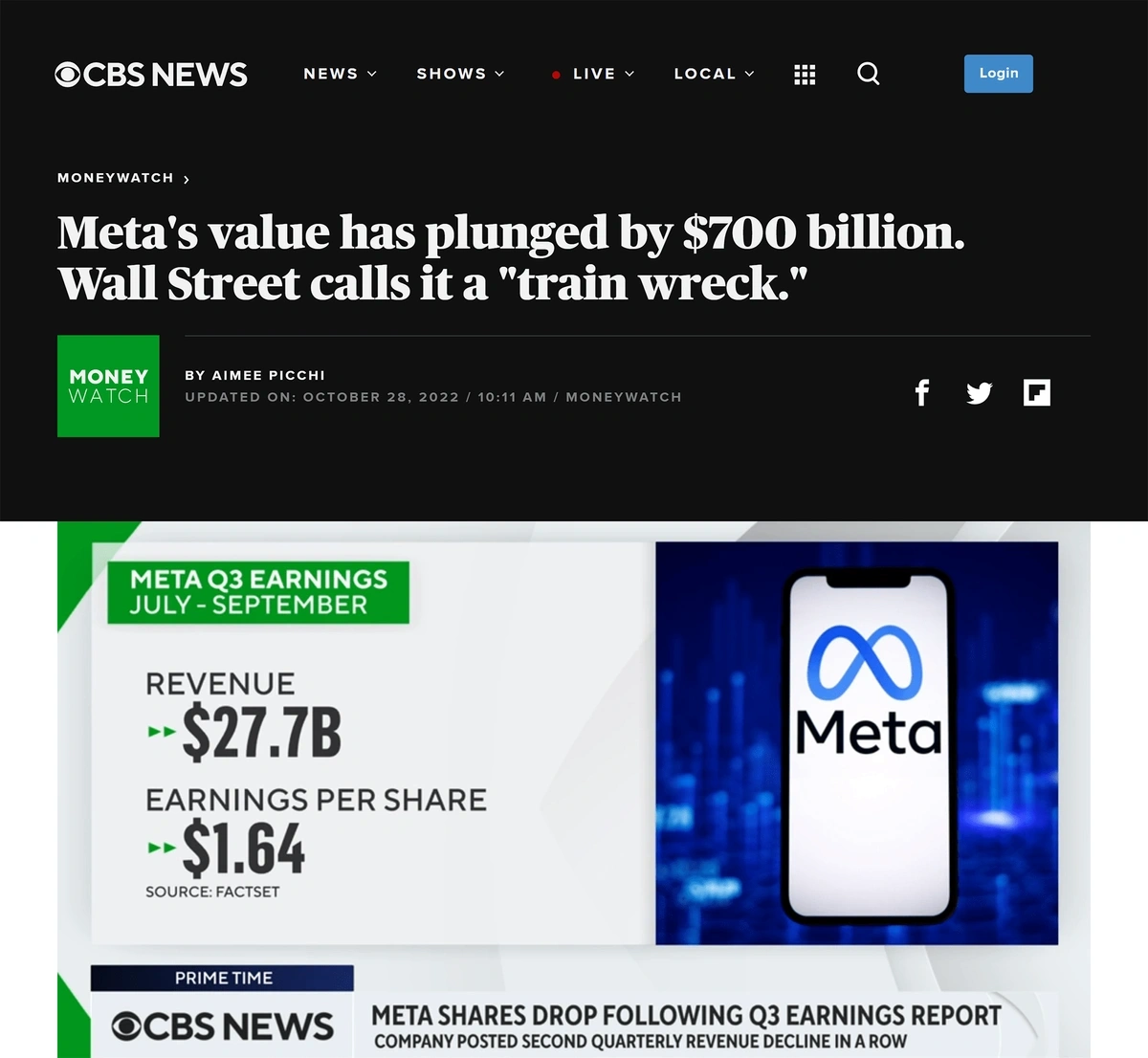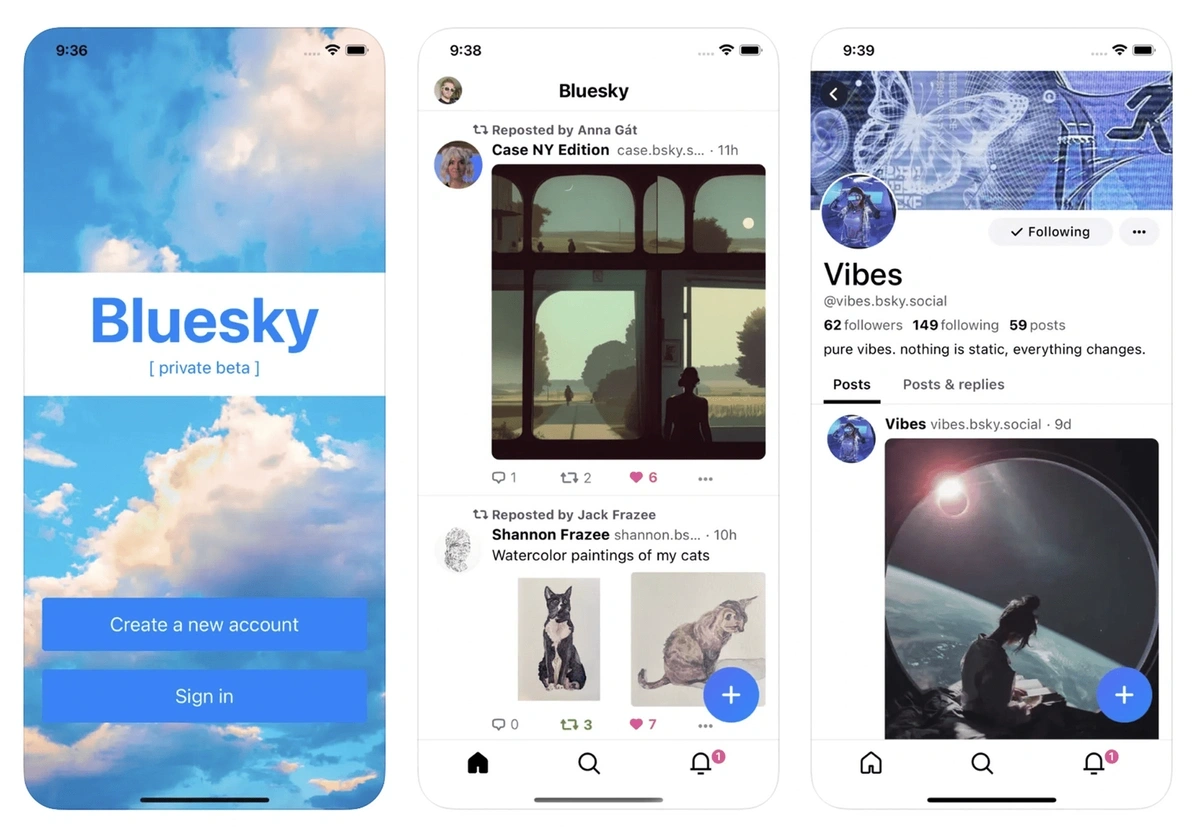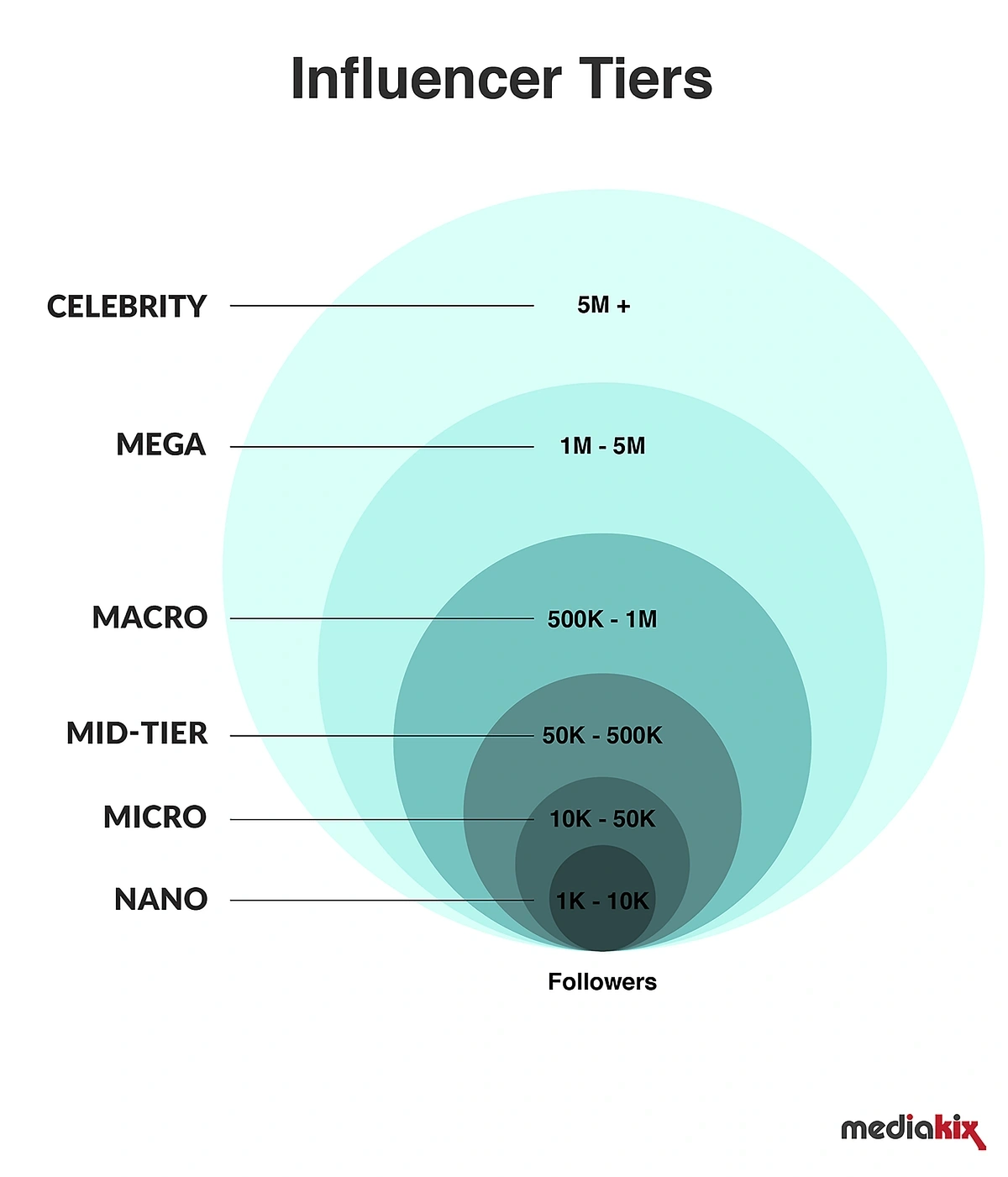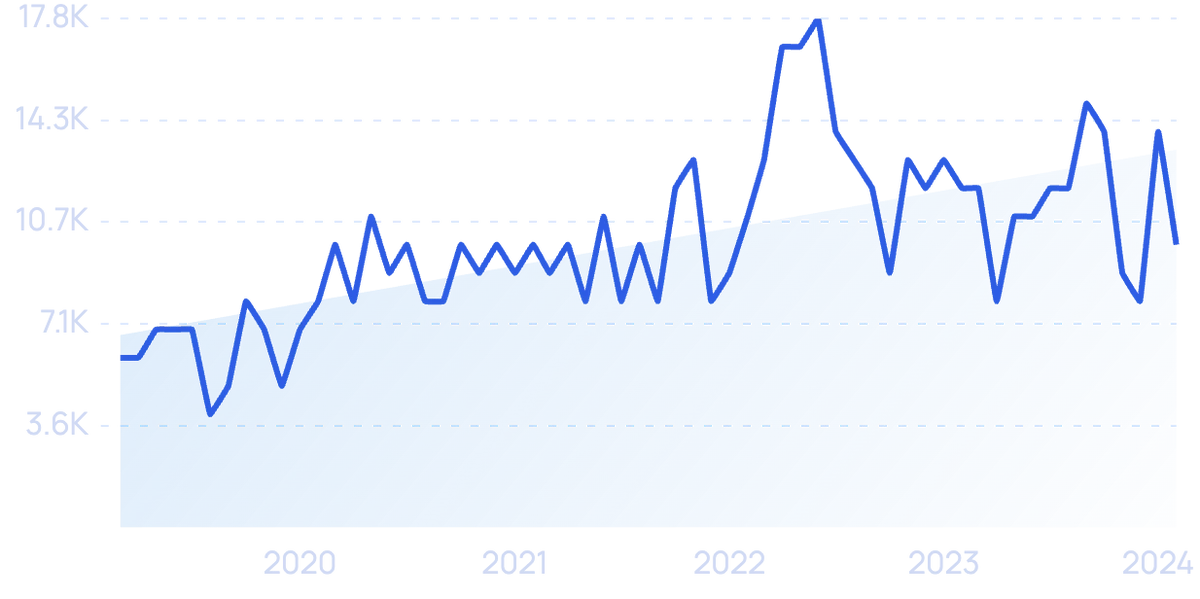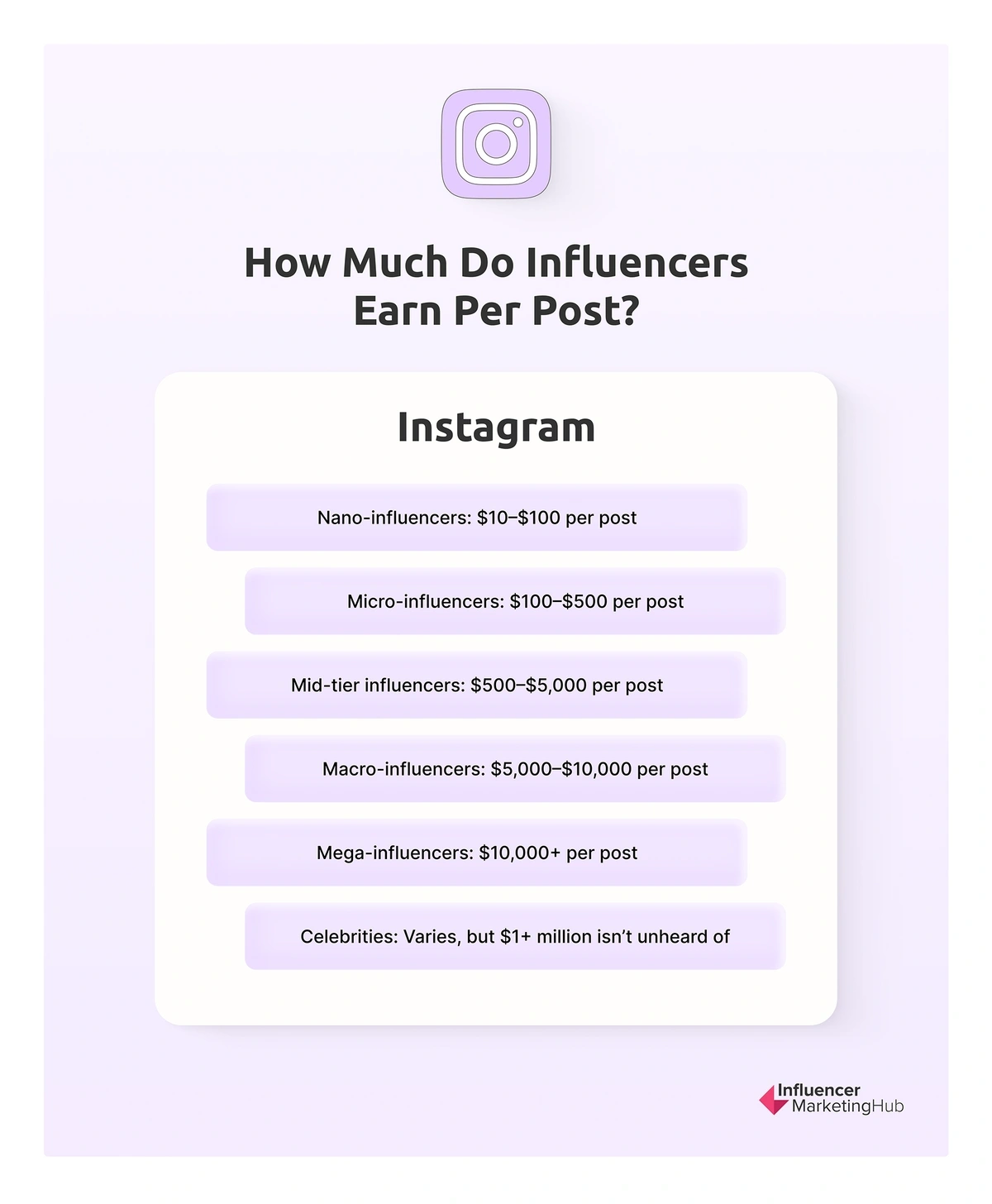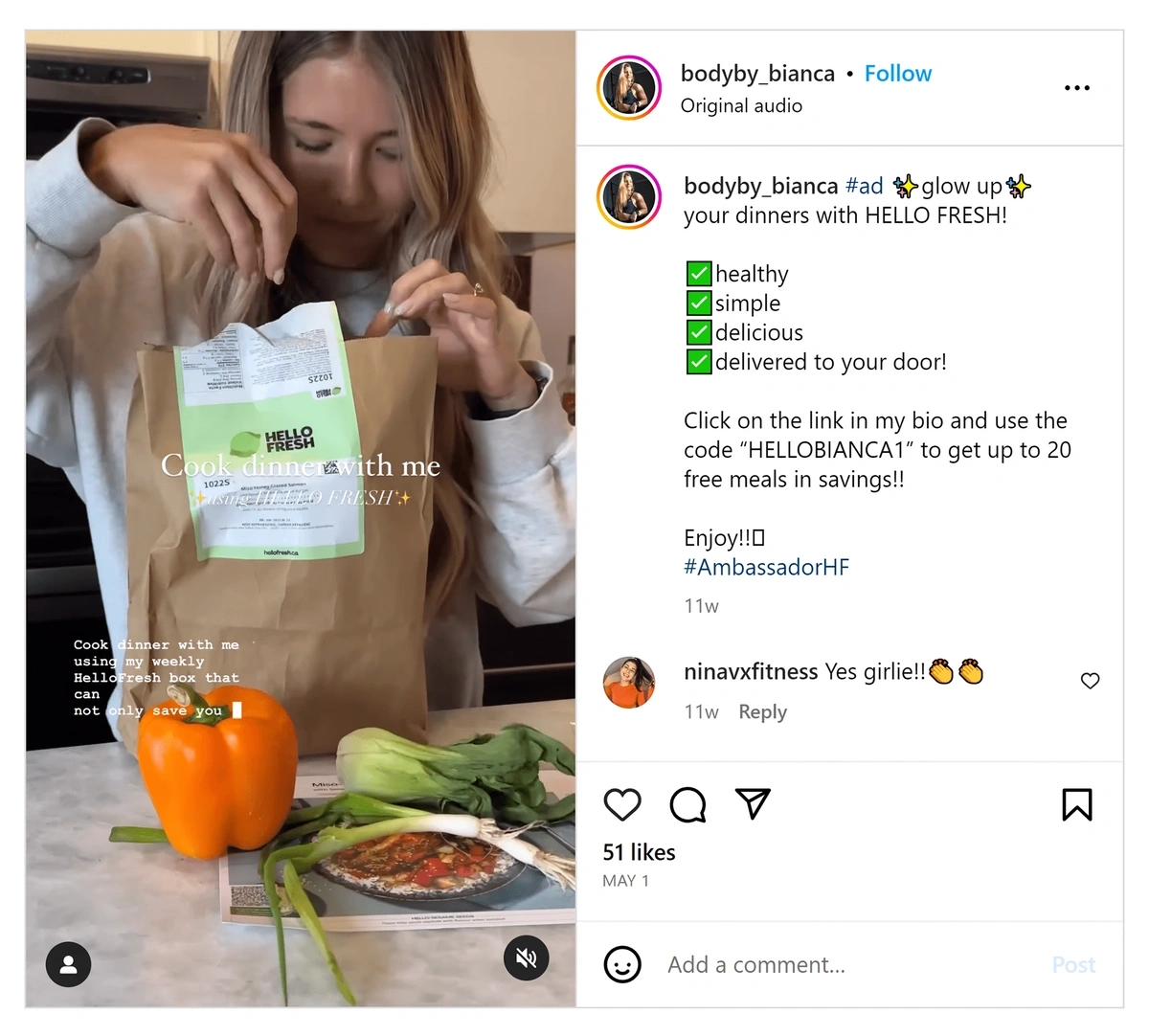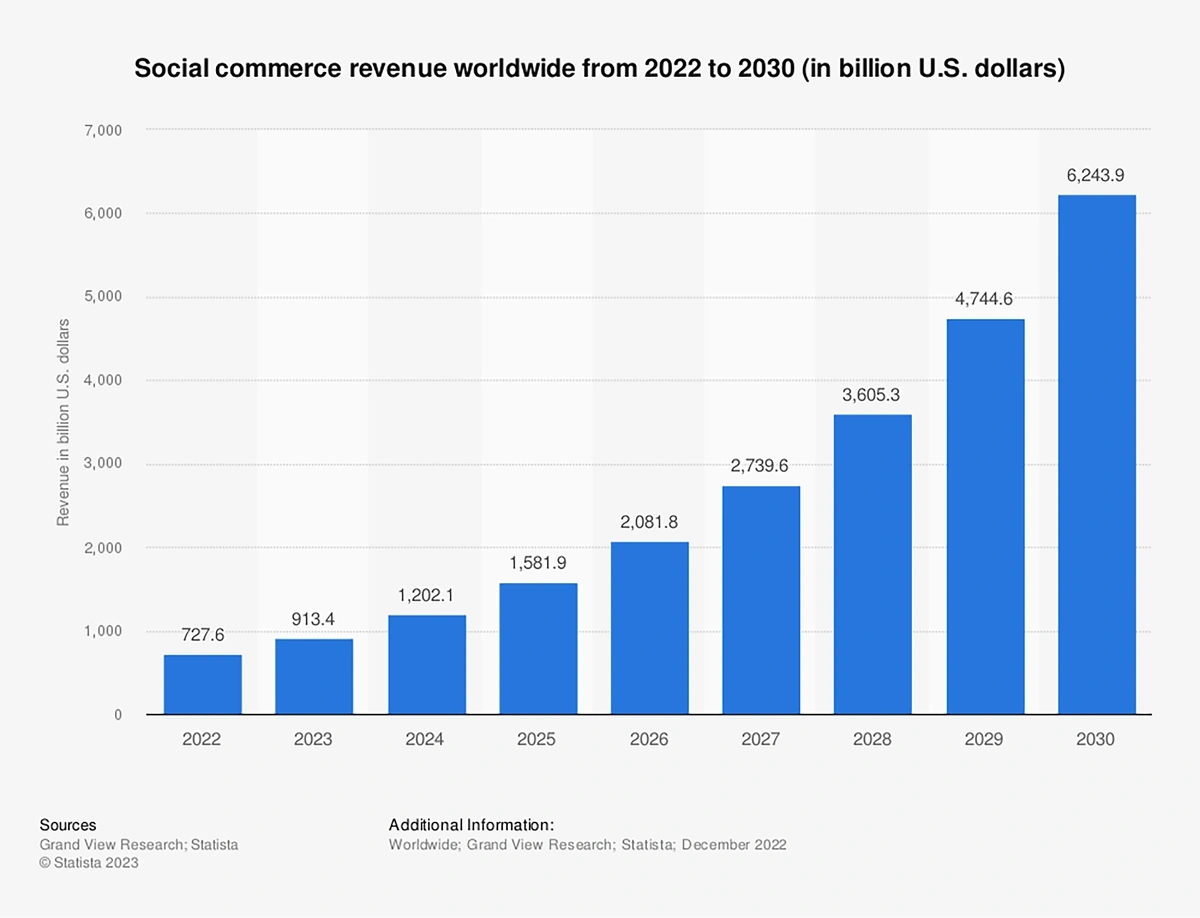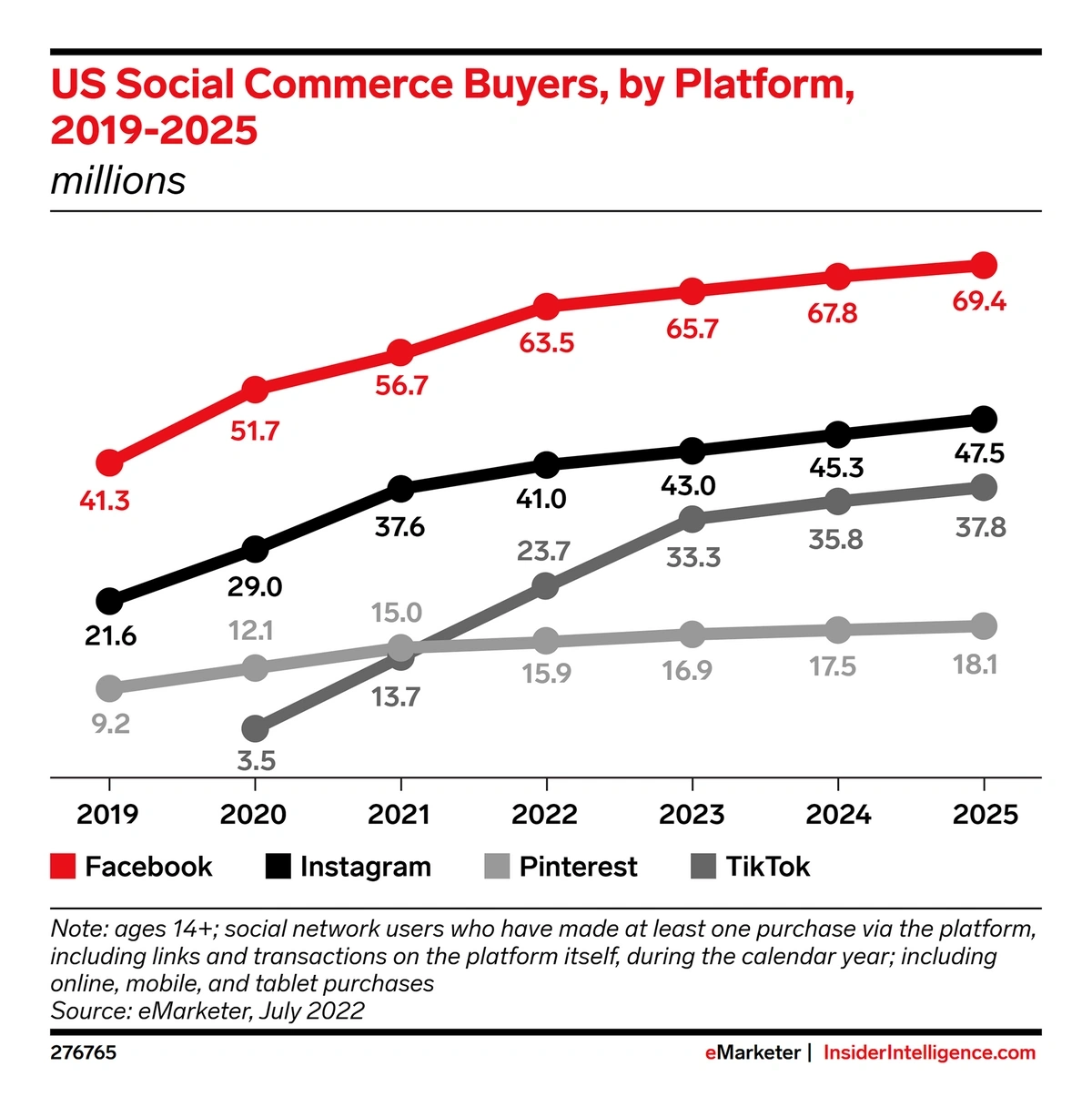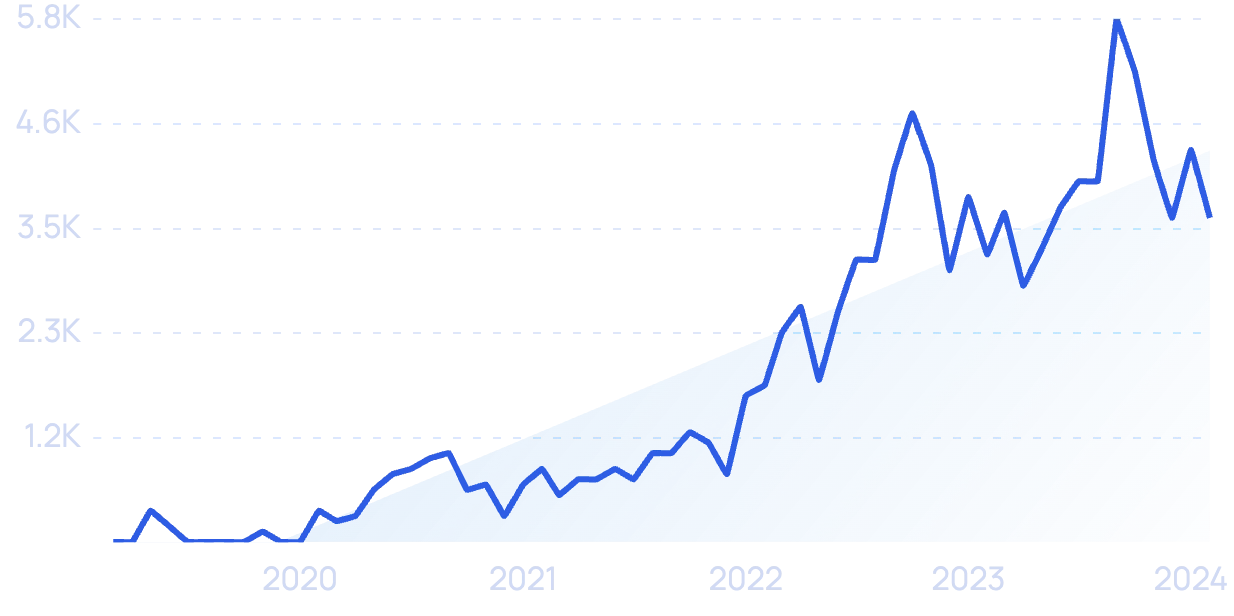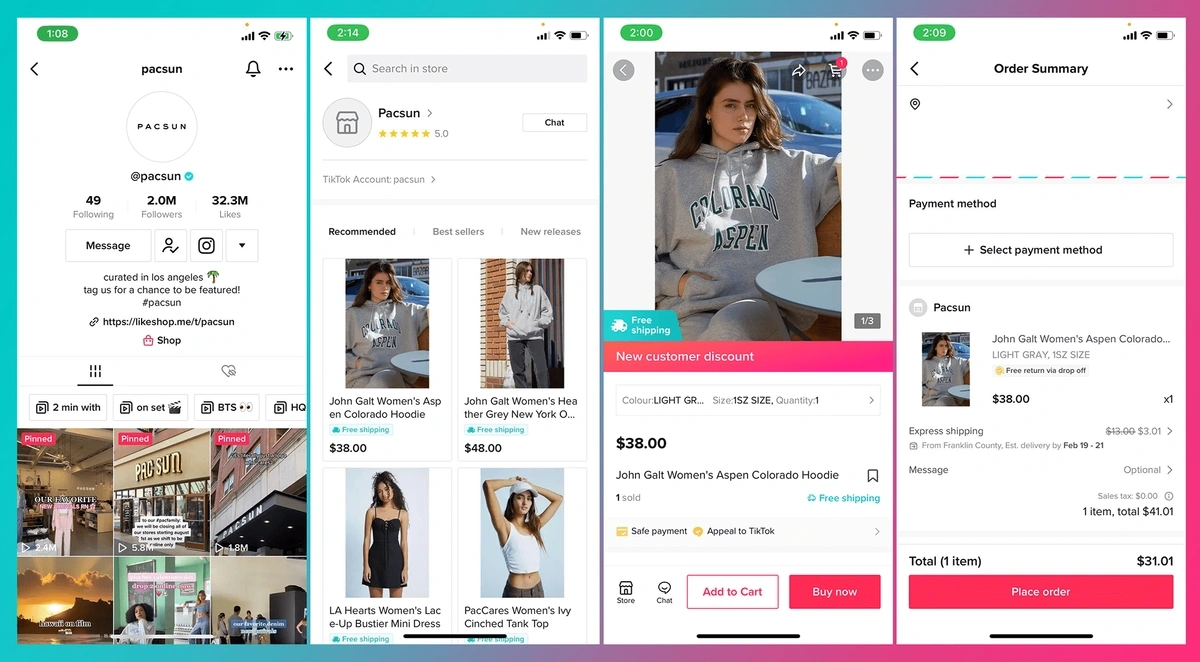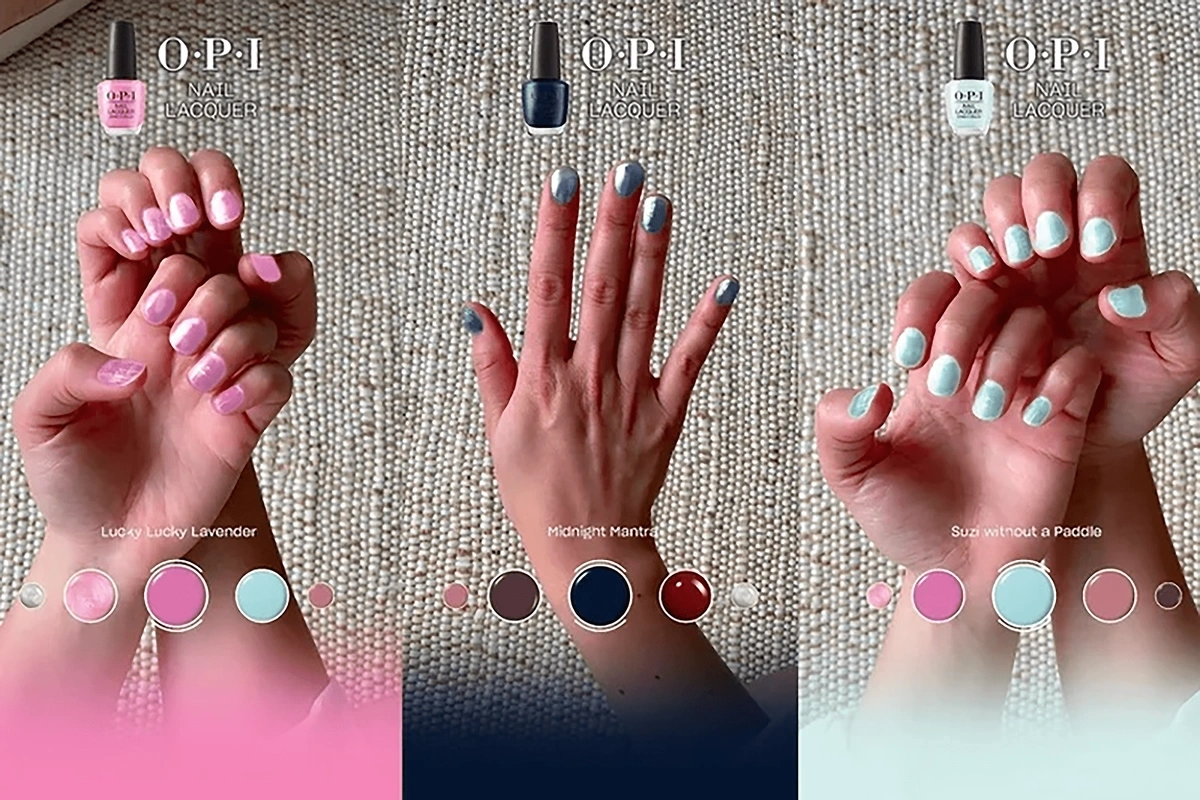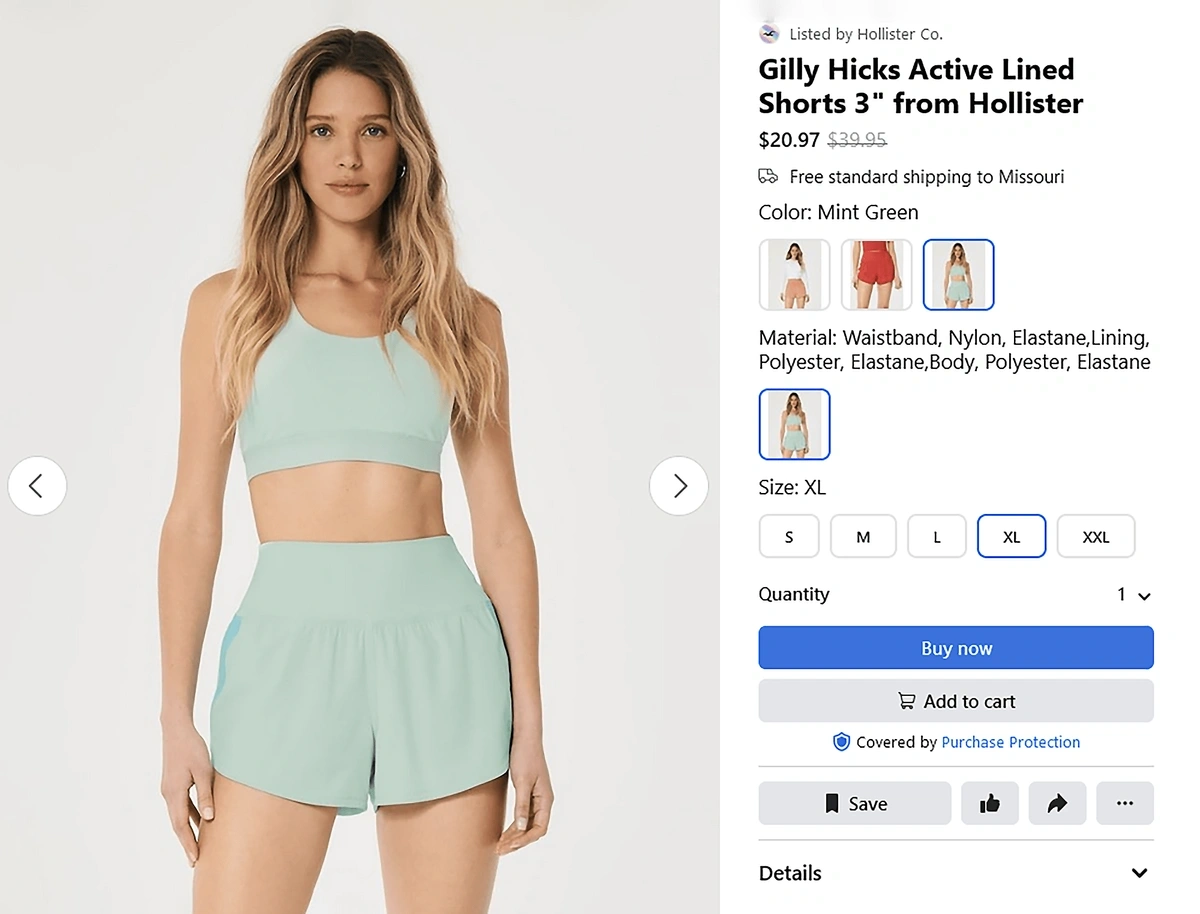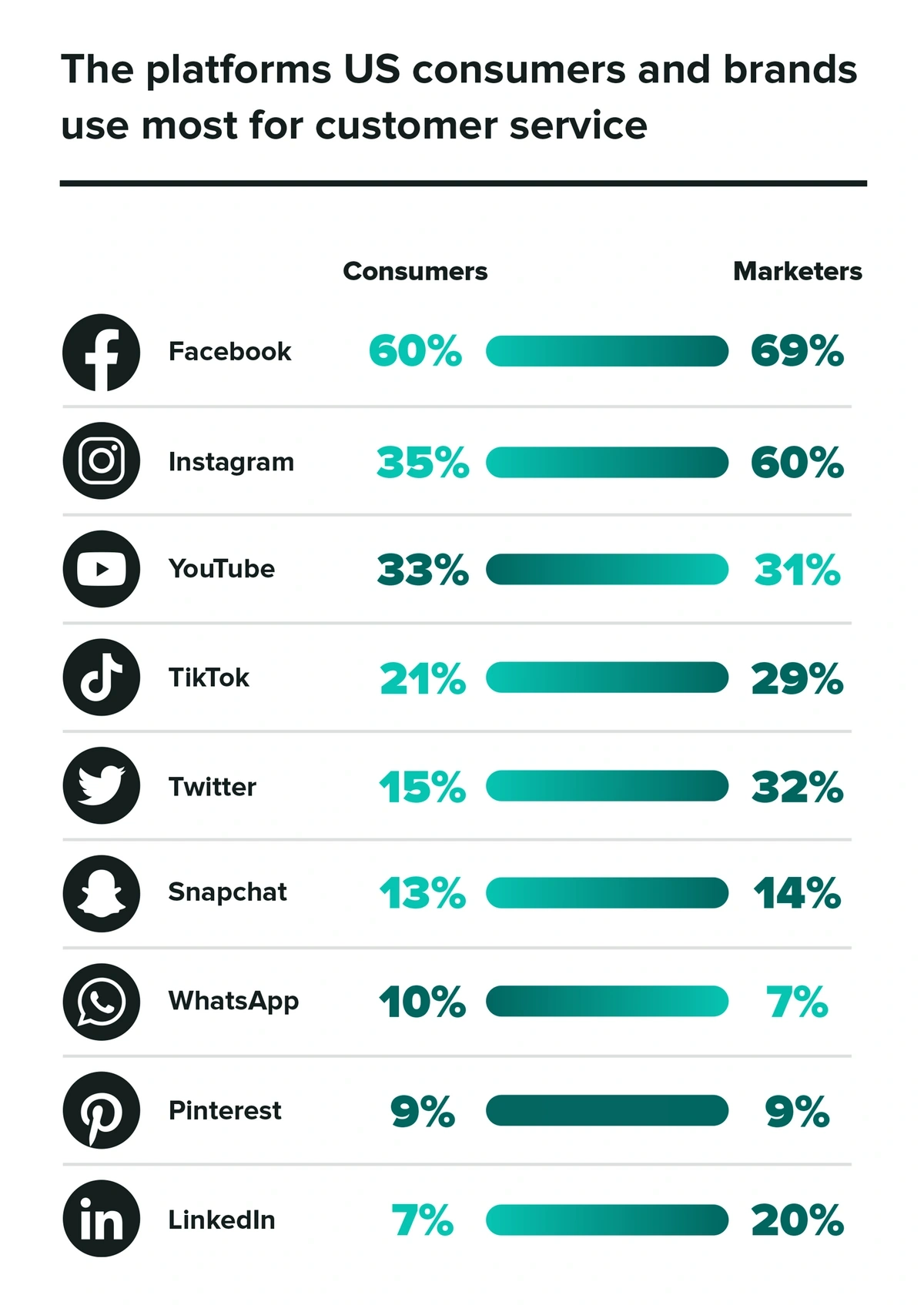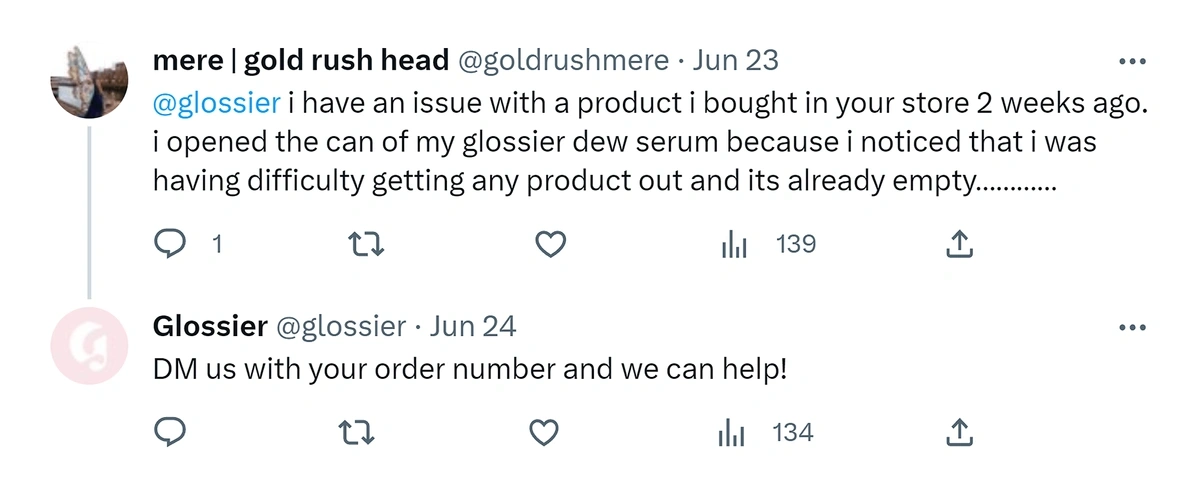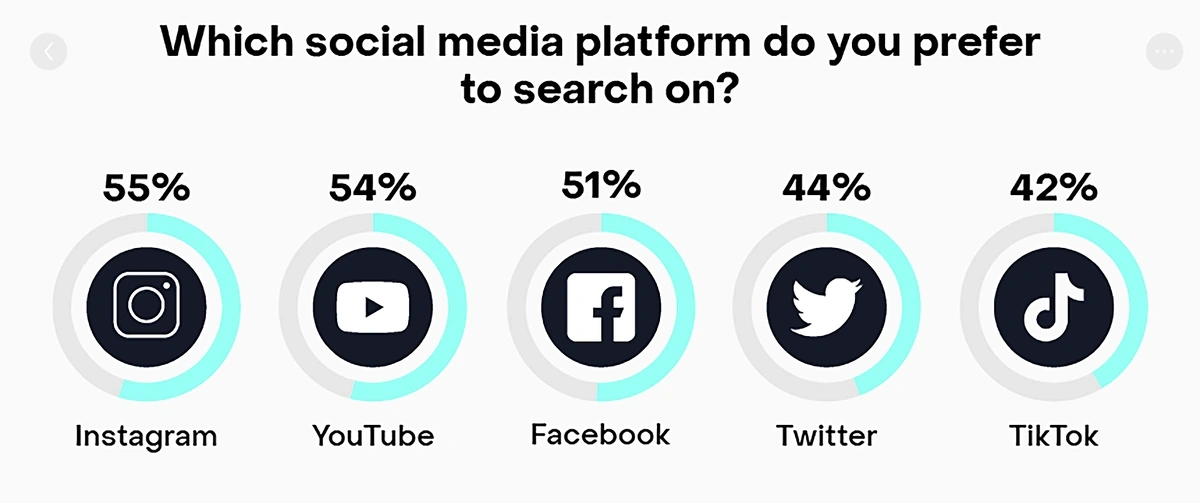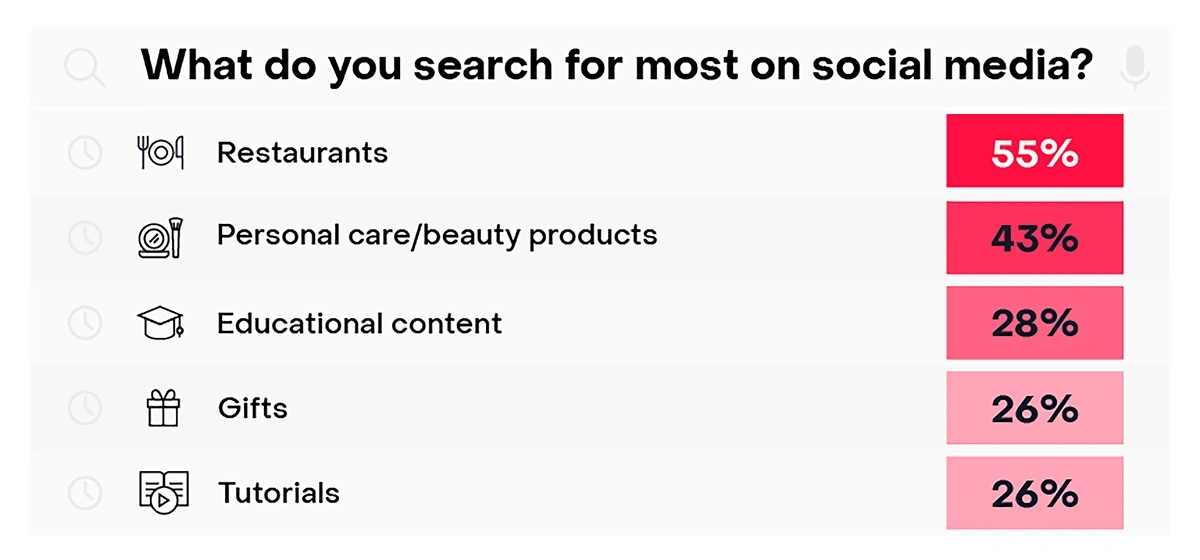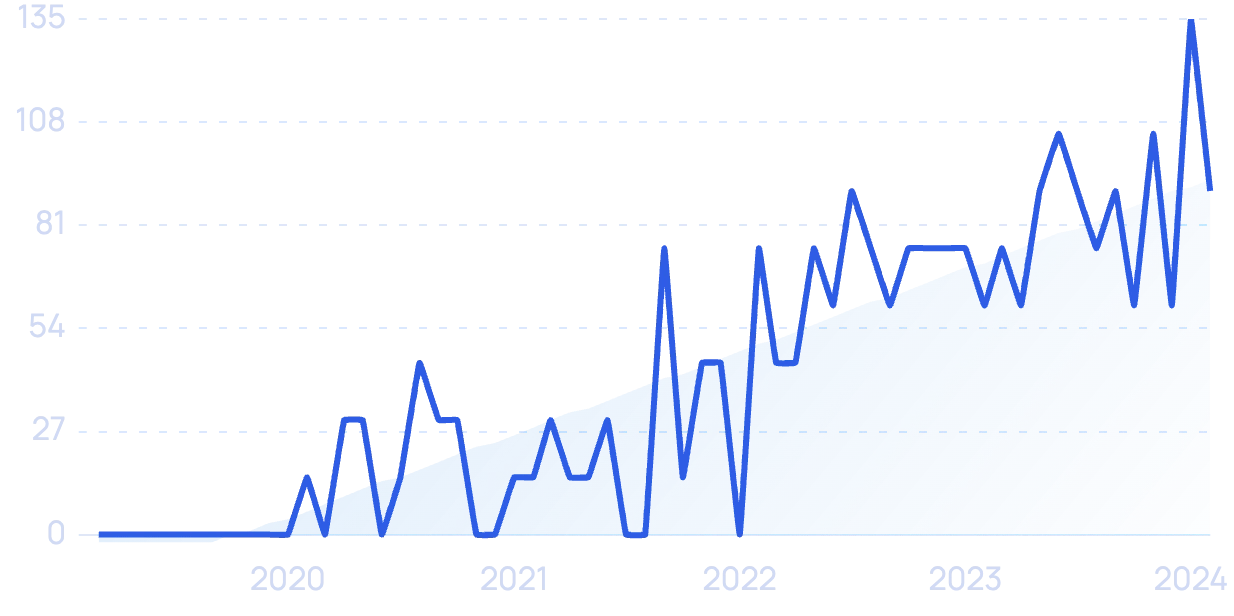
The Future of Social Media (2025-2027)
With more than 5.17 billion users, social media is one of the most powerful forces in the world today. Consumers and businesses rely on it for connecting, researching, and communicating.
And the impact is still growing — more than 5.85 billion users are expected by 2027.
In this report, we’ll walk through the most impactful future prospects for social media. We’ll also offer insight into some of the uncertainties in this space.
The Future of Social Media Platforms
The popularity of social media has hit its highest level ever and shows no signs of slowing down.
Today, worldwide users spent an average of 151 minutes per day on social media.
In recent history, that time has gone up an average of three minutes per year, meaning it could hit 170 minutes per day by the end of the decade.
Users are spreading this time amongst several different platforms.
According to the latest data, the average internet user aged 16-64 used more than six social platforms.
Facebook remains a social media giant with more than 2.9 billion monthly active users worldwide. Mark Zuckerberg predicts the platform will have 5 billion users by 2030.
YouTube boasts 2.5 billion monthly active users while WhatsApp and Instagram both see 2 billion users per month.
TikTok, Snapchat, Twitter, Pinterest, and a few others round out the list of the top 15 most-used social platforms today.
Facebook remains the market leader in social media.
However, there’s potential for all of this to change in the coming years.
TikTok is set to grow faster than any other major platform according to Insider Intelligence. Predictions show it growing by 9.3% between 2023 and 2024 and 7% between 2024 and 2025 (although there's the looming threat of a US ban, which has driven some users to RedNote).
Contrary to Zuckerberg’s predictions, Facebook’s growth is set to be less than 1% during the same time.
In a 2023 article from The New York Times, a social media expert declared that “platforms as we know them are over”.
Instead of one-size-fits-all social platforms, it’s predicted that smaller, more niche platforms will lure a large number of users in the coming years.
Research supports this claim.
In one survey, nearly 60% of people under 30 said they preferred smaller social communities.
Some social media experts also predict that decentralized social media, which gives users more control, will impact the market in the near future.
Privacy concerns, AI, and AR all have the potential to disrupt the social media space, as well.
Let’s see how a few major platforms are set to change in the coming months and look at a few emerging platforms, too.
Facebook has been losing users for the past two years and that downward trend may continue.
Between 2020 and 2022, the number of active users in the US and Canada has fallen by 1 million.
In fact, the entire Meta brand is struggling with their bottom line.
Although Meta’s value peaked at more than $1 trillion in September 2021, by October 2022, the company had lost nearly $700 billion in market value, landing at $268 billion.
In February 2022, Facebook saw a drop in daily active users for the first time in the platform’s history.
In addition, increased privacy restrictions reportedly cost Facebook $10 billion in revenue in 2022.
The good news for Meta is that their newly released Threads platform is taking off quickly.
The platform debuted in July 2023 as an alternative to Twitter and within a week it had already amassed 100 million sign-ups.
X (Formerly Twitter)
Facebook isn’t alone in the struggle for dollars and users.
Since Elon Musk acquired Twitter in October 2022, the platform has made several changes, including renaming the platform "X". Many users have voiced their disapproval.
More than 600 of the platform’s top 1,000 advertisers had stopped spending as of January 2023.
That contributed to a 60% drop in ad revenue for the platform between October 2022 and January 2023.
The number of big companies advertising on Twitter dropped substantially in the final months of 2022.
Insider Intelligence predicts more than 30 million users will leave Twitter within the next two years.
Analysts say technical issues and “unsavory content” are what will drive users to quit.
A survey from the Pew Research Center shows 60% of Twitter users had taken a multi-week break from the platform between March 2022 and March 2023.
30% of women say they aren’t likely to be on the platform in a year.
One-quarter of users say they don’t think they’ll be using the platform one year from now. In the year leading up to September 2024, daily active X users in the US dropped by around 20%.
New Social Media Platforms
As the social media landscape shifts, room is open for other platforms to emerge.
For many former X/Twitter users, BlueSky is becoming the platform of choice.
BlueSky is an emerging social media platform that functions like Twitter.
Want to Spy on Your Competition?
Explore competitors’ website traffic stats, discover growth points, and expand your market share.
The app is very much like Twitter, which makes sense because it was developed by former Twitter CEO Jack Dorsey.
Search interest in “BlueSky” started growing in late 2022.
The main difference is that BlueSky is decentralized, meaning user data isn’t stored by BlueSky. Instead, user data is stored on independent servers.
After launching in February 2023, participation in a beta version was initially invite-only.
But the app has since been made open to all. There are now over 25 million BlueSky users.
According to Semrush data, BlueSky's organic traffic has surged 7x over the past year. Currently, they generate roughly 7.2 million organic search visits each month.
Search volume for “decentralized social media” is up 850% since 2019.
Mastodon is another decentralized social media app. It’s actually been around since 2016, but it’s seen a surge in popularity since Twitter exchanged hands.
As of mid-2023, the platform sees 1.4 million monthly active users. That’s down from 2.5 million monthly users, an all-time high that hit right after Musk took over Twitter.
Mastodon is a decentralized social platform run by a non-profit organization.
On the other hand, BeReal is a growing platform that’s seeing a surge in users who are looking for authenticity on social media.
The app randomly assigns users a two-minute time slot each day in which they are to post a picture of themselves (from both the selfie mode and the back camera) wherever they are. Users can’t see posts from other users unless they post their own photos.
According to HubSpot data, the app saw a 313% increase in users between May 2022 and January 2023.
When looking at just Gen Z users, usage jumped 1,200%.
Glossy reports that BeReal usage had its ups and downs in 2023, but many beauty brands are sticking with the platform.
Too Faced, K18, E.l.f. Beauty, and Innbeauty are just a few examples.
Too Faced used their Instagram account to promote their presence on BeReal.
The Future of Social Media Influencers
The social media influencer market is expected to grow to $24 billion in 2024.
However, brands are no longer showing a preference for high-profile celebrities.
Instead, they’re turning to micro-influencers (10k-50k followers) and nano-influencers (1k-10k followers).
Nano- and micro-influencers have fewer followers but a better connection with their audience.
In one survey from Influencer Marketing Hub, 39% of brands said they’re looking to work with nano-influencers and 30% said they’d like to work with micro-influencers.
HubSpot reports that 80% of marketing professionals who currently work with influencers work with creators who have less than 100k followers.
There are a few reasons why micro-influencers are likely to be the influencers of choice in the future.
Search volume for “nano influencer” has increased by 86% in the past 5 years.
First, these influencers are less expensive and better for marketing departments with strapped budgets.
Companies spend an average of 53% of their marketing budgets on digital strategies, but budgets are tight right now and 70% of marketers expected budget cuts to continue throughout 2023.
According to Influencer Marketing Hub, a nano-influencer or micro-influencer is paid between $10 and $500 per post on Instagram.
Influencers with more than 100k followers can charge between $5,000 and $10,000+ per post.
Instagram influencers with fewer followers generally charge less per post.
Influencers with smaller followings are often more active and personal with their audiences, as well. This is a sticking point for brands that want to come across as authentic on social media — a necessity for brands who want to win over consumers in the future.
Choosing a micro- or nano-influencer also means that brands can search out an influencer that specifically fits with their product niche. This leads to better quality content from the influencer and more engagement from their followers.
44% of marketers prefer working with influencers with smaller followings because they’re less expensive and more open to long-term partnerships.
Instagram user @bodyby_bianca is one example of a nano-influencer.
Bianca recently partnered with Hello Fresh.
She’s an online fitness coach with content that features gym workouts and nutrition advice.
Her recent partnerships include Hello Fresh, Beam supplements, and CRZ yoga.
Another Instagram nano-influencer is Megan May who posts with the handle @meganmtl.
@meganmtl posts about fashion and lifestyle trends for working moms.
Megan is an example of a niche influencer.
Her content is geared directly toward working moms. In fact, her profile description puts it quite simply: “supporting our modern women who do it all.”
She has just shy of 6k followers who are very active on her posts about skincare, fashion, and the lifestyle of career moms.
In the past few months, a wide variety of brands have partnered with Megan: fashion brands, baby brands, and even Mazda.
The Future of Social Media Commerce
HubSpot reports that nearly half of brands are currently selling their products directly within social media apps.
Their data also shows that 1-in-5 social users from Gen Z, the Millennial generation, and Gen X have made a purchase in a social media app in the past three months.
And that number is likely to climb in the future.
Globally, social commerce revenue is predicted to reach more than $1.2 trillion in 2024 and grow to $6.2 trillion by 2030. That’s a CAGR of more than 31%.
Social commerce revenue is growing rapidly.
That rapid increase means social commerce is growing 3x faster than traditional shopping methods and will account for more than 16% of total ecommerce spend by 2025.
Social Commerce on TikTok
Despite being just the third-ranked social commerce platform in the U.S., TikTok's social commerce reach is growing rapidly.
Facebook and Instagram are leading the social commerce market, but TikTok’s presence is growing quickly.
#TikTokMadeMeBuyIt currently has 8.1 billion views
Search volume for “TikTok ecommerce” is up nearly 6,100% in the past 5 years.
In 2022, the number of consumers who purchased a product via TikTok grew by more than 72% year-over-year to reach 23.7 million. That number is likely to go even higher in 2023.
By 2025, predictions say there will be 37.8 million shoppers on the platform.
TikTok recently announced a new feature called Shop that allows users to complete their shopping transactions without ever leaving the platform. In the past, shoppers have had to complete their transactions in an in-app browser.
TikTok Shop creates one seamless shopping experience within the app.
It’s rumored that TikTok’s social commerce growth is prompting the brand to open its own product fulfillment centers in the United States. This could radically improve efficiency for small shops and provide a way for small social sellers to scale their businesses.
Social Commerce on Snapchat
Snapchat is proving to be all-in on social commerce, as well.
The platform is using AR technology to enhance the shopping experience.
The Shopping Lens links directly to a brand’s catalogs. Users can then use the AR lens to try on things like cosmetics and clothes.
Snapchat users can try on nail polish using AR in the app.
The brand says users engage with the platform’s AR features 6 billion times per day and 93% of them want to use AR for shopping.
Social Commerce on Meta Platforms
Meta is one social brand that’s shown a cooling interest in social commerce lately.
E-commerce growth on the platform has been slow—the number of Facebook buyers increased by just 3.5% between 2021 and 2022 compared to an increase of 11.9% between 2020 and 2021.
The brand recently removed live shopping from Facebook and Instagram and did away with the “Shop” tab from Instagram.
But this may signal a new social commerce strategy for the future.
In April 2023, Meta announced it would be expanding its Shops ads to more brands so that customers can make more purchases directly from ads and expanding in-app purchasing through Shops.
Consumers on Facebook will soon have the option to make purchases directly from ads.
In the U.S., Meta will no longer allow new brands to set up a Shop without using Checkout with Facebook or Instagram. By April 2024, all Shops will have in-app checkout.
The Future of Customer Service via Social Media
Customer service is a pain point for many brands today.
According to Forrester’s 2022 Customer Experience Index, almost 20% of brands had a drop in customer experience quality in 2022.
The 2022 Customer Experience Index showed a drop in customer service experience for many companies.
That was the highest number of brands to see a drop since the Index began seven years ago.
That’s a huge problem for brands.
A 2022 Zendesk survey showed that 61% of consumers will switch to a different brand after just one bad customer service experience. That was a 22% jump from 2021.
The Customer Experience Index also showed that just 3% of US companies are “customer-obsessed”, meaning they put customers at the center of their business operations and strategies.
But “customer-obsessed” is what today’s consumers are demanding.
More than 30% of customers expect customer service to be more responsive and empathetic in a post-pandemic world.
Just 20.7% of survey respondents said they didn’t expect customer service changes after the pandemic.
Despite advances in AI and chatbots, the majority of consumers still want to connect with a dedicated human agent.
They also want quick resolutions—two-thirds of customers say the speed of customer service is just as important as the price.
And, consumers want brands to meet them where they are. It’s a concept called omnichannel customer service and its importance is growing.
Search volume for “omnichannel customer service” is up nearly 860% over the past 5 years.
Consumers are using increasingly diverse methods of communication to contact brands, and they want brands to be able to move their interactions seamlessly from one channel to another.
Social media plays a big role in omnichannel customer service. Plus, it provides the quick, personalized support customers want.
Salesforce reports that approximately 20% of consumers prefer using social media for customer support.
For some brands though, that number can reach as high as 60% of customers.
Data from Zendesk points out that the number of customer service tickets from social messaging was up 32% and tickets from social media were up 20% in 2021.
Consumers and brands are using various social platforms for customer service.
Facebook ranks in the number-one spot: 60% of consumers and 69% of brands say it’s their preferred social platform for customer service.
Instagram ranks second and YouTube comes in third.
Facebook is the top social platform for customer service.
Facebook Messenger, in particular, is one of the most popular ways brands are providing support to customers.
Meta reports that more than 20 billion messages are exchanged between businesses and consumers on the platform each month.
Twitter is another big platform in this space.
Nearly 65% of Twitter users say they’d rather message a brand’s handle directly than call them on the phone.
Glossier is one brand that regularly replies to customer Tweets and is quick to offer help to shoppers.
Glossier replies to customer product inquiries.
The company doesn’t shy away from negative customer tweets either. Instead, they invite customers to send them a DM.
Glossier responds to negative tweets, as well.
Warby Parker is another brand that looks to be focused on Twitter customer service in the future.
The brand continually replies to tweets from customers and answers questions quickly with lighthearted responses.
Warby Parker keeps a lighthearted tone when responding to customer service tweets.
Because younger generations are the ones most likely to use social media for customer support, it’s likely that this trend will continue to gain momentum.
Many consumers who will soon come into their own spending power, like individuals in Gen Z and Gen Alpha, have never known a world without the internet. It’s likely that their first choice for customer service will be social media.
Brands that can achieve success in social media customer service in the future will likely see the impact on their bottom line.
McKinsey suggests companies that offer customer service on social media can surge ahead of their competition.
McKinsey reports that shoppers spend up to 40% more with brands that respond to customer support requests on social platforms.
On the other hand, they say, brands that don’t offer social media customer support see a 15% higher churn rate than those who do offer this social support.
The Future of Social Media as a Search Engine
Nearly 50% of internet users between the ages of 16 and 34 use social networks as a primary source of information when researching brands.
Older generations are lagging behind just a bit but still posting high numbers when it comes to using social media as a search engine.
44% of those 35-44 years old use social for search and so do 38% of 45-54 year olds.
When it comes to Gen Z, 36% of individuals actually search for brands on social media more than they search via search engines.
Consumers under the age of 24 are likely to search for brands on social media.
Data from 2022 shows that internet users aged 16 to 64 now visit social media sites more than search engine sites.
In January 2022, 84% of people had been on a search engine in the past month while 95% had been on social media.
Even Google has acknowledged that younger users are turning to Instagram or TikTok instead of Google Search as a first step in product discovery and that this user behavior is likely to continue in the future.
Senior Vice President Prabhakar Raghavan said 40% of young users, ages 18 to 24, go to social media instead of Google Search when they’re looking for things like where to eat for lunch.
A 2022 survey from Frontier Communications reveals that Instagram, YouTube, and Facebook are the biggest platforms for social media searches.
Instagram and YouTube are the two most popular platforms for social media searches.
The survey also showed that users are most frequently searching social platforms for restaurants and personal care products.
The majority of social media searchers are looking for restaurants.
This trend is leading brands to optimize their social media content specifically for search.
Search interest in “TikTok optimization” has grown more than 6,567% since 2019.
Plugging keywords into a brand’s profile, post captions, and hashtags is more important than ever.
Brands that can seamlessly integrate keywords into their handle and profile are more likely to show up in social searches.
This coffee company inserts “coffee” and “organic” into its profile several times.
Captions matter too. Brands depend on relevant keywords and hashtags to bring people to their content.
As optimization strategies evolve, there are several early adopters offering advice. And millions of users are watching their videos.
TikTok user @keeansocial has dedicated his entire TikTok presence to offering social search optimization advice.
His posts have a total of 1.1 million likes and his individual videos regularly get more than 100k views.
@keeansocial posts advice about social search optimization.
Conclusion
The social media landscape has long been dominated by a few key players, but several important changes could shake up the social media leaders. Shifting consumer preferences and business priorities will both be influential in the coming years.
Social media experts say brands will continue to invest in social commerce and authentic influencer marketing. These two strategies have proven their value and most agree that value will continue to grow well into the future.
New opportunities are emerging, too. Brands have a chance to differentiate themselves from the competition by optimizing their content for search and providing rapid-response customer service through social media. Also, watch for brands to renew their commitment to authenticity and transparency as they look to engage users.
Stop Guessing, Start Growing 🚀
Use real-time topic data to create content that resonates and brings results.
Exploding Topics is owned by Semrush. Our mission is to provide accurate data and expert insights on emerging trends. Unless otherwise noted, this page’s content was written by either an employee or a paid contractor of Semrush Inc.
Share
Newsletter Signup
By clicking “Subscribe” you agree to Semrush Privacy Policy and consent to Semrush using your contact data for newsletter purposes
Written By


Alison is an accomplished copywriter with proven success in editing, marketing, research, and management. Before writing for E... Read more



